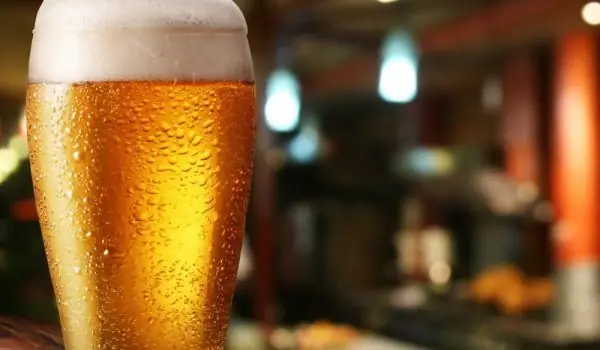2025 Author: Jasmine Walkman | [email protected]. Last modified: 2025-01-23 10:18
You can surprise your friends by proving yourself as a real taster and show that you understand wine no less than professional sommelier.
The most important thing is to look at the wine. Look at it from above to see how shiny its surface is and whether there are any particles on the surface.
Then inspect the wine glass on the side, preferably on a white background. Hold the glass straight, then tilt it slightly, determining the intensity of the color of the wine, its hue, the degree of transparency and luster, the presence or absence of bubbles.
The pale color of white wine usually means that it is light, and the luster and transparency - that it is highly acidic. The stronger the luster and the more transparent the wine, the higher its acidity.
Light matting means softened acidity. The white-green color reveals that the wine is young, fresh and fragrant. Mature wine has a straw-gold color, and fully mature - amber. The grayish or brown edge of the wine disk in the glass indicates that the wine is dying.

In red wines, the evolution of color is from purple to brown. The young elite wine is purple, dark ruby, pomegranate, cherry or scarlet with a purple tinge. The mature and harmonious is orange and lighter, there is a wreath with shades of ocher.
When red wine is very old, there are no red flashes. If a wine that does not live long, such as the new Beaujolais, has a yellowish wreath, it means that it has completely withered.
Turbid but not very old wine means that it is spoiled or its lees have surfaced. The brown color of the young red wine is an indicator of its premature death or the use by the producer of rotten grapes to make the wine.
As you tilt the wine glass sharply and turn it slightly, look at the "tears" that run down the walls of the glass. They are formed due to the difference in the evaporation of water and alcohol, as well as if there is glycerin in the wine.

Light dessert wines have slightly pronounced "tears", and wines with a high alcohol content are more embossed and form beautiful arcades. Spoiled wine forms shapeless "tears", usually with bubbles.
As for champagne, it should never be poured into wet glasses, because the bubbles and foam will be damaged. The bubbles are an indicator of the good quality of the champagne.
In good champagne, they should be small and the same size. Each bubble lives a few seconds. After the foam disappears, the bubbles must constantly rise from the bottom of the cup and form chains. The small amount of bubbles indicates that the champagne is old.
The quality of the bubbles can be judged only after half a minute has passed after filling the cup. Due to the difference in the temperature of the cup and the room, the bubbles may initially be larger.
It takes thirty seconds to equalize temperatures. Never cool a champagne glass, as this will cause moisture to form on its walls.
Recommended:
How To Recognize Quality Honey?

If in the middle of winter a trader wants to sell you liquid honey with the guarantee that it is real - do not believe him. The only exceptions are buckwheat and acacia honey, which do not crystallize. Natural honey is liquid only during the first 1-2 months, and then it must crystallize.
How To Recognize Quality Olive Oil

To recognize quality olive oil, we need to know its basic characteristics. These are usually the price, the acidity of the production and the taste. The price of olive oil is determined by the quality. If it is suspiciously low, it is best to pay attention to the label and the corresponding markings.
How To Recognize Quality Turmeric?

Turmeric is one of the most important spices in Indian cuisine. But, it is used not only for cooking, but also as an Ayurvedic medicine that boosts immunity, helps with wound healing and acts as a natural anti-inflammatory. It is most often available on the market in powder form, but can also be found in its natural form - a root resembling ginger.
What Does Native Beer Contain And How To Recognize Quality Beer

Although Bulgaria is not the leading country in drinking beer in the world, when the summer heat comes, there is no more popular drink in our country. However, what the native beer contains and how to distinguish the quality from the low-quality, reveals the section Read the label of bTV.
How To Recognize Quality Oil?

The soul of the kitchen and a faithful friend on the way to delicious food, butter has a very important place in the big world of cooking. Both the aroma and the consistency, even the type of the dish, depend on it. It connects, combines, elevates the flavors and ingredients of millions of dishes in kitchens around the world.

